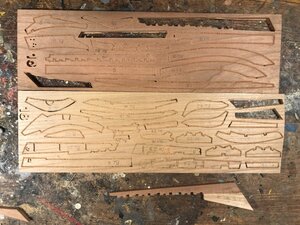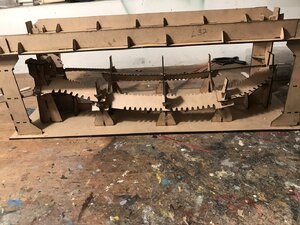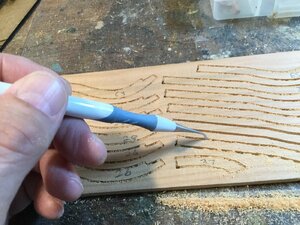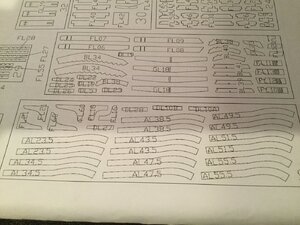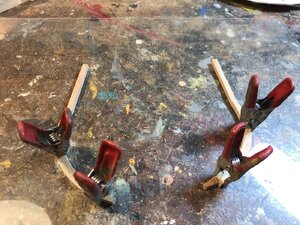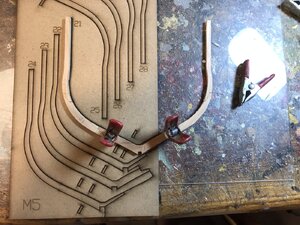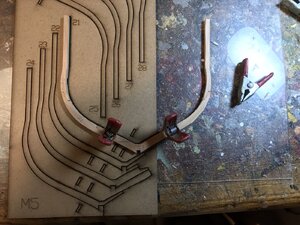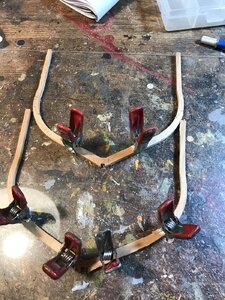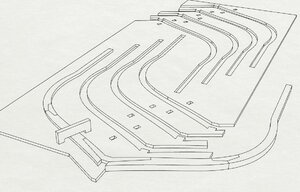- Joined
- Dec 31, 2017
- Messages
- 290
- Points
- 158

I’ve started a build log for Alert, although I must admit that my progress will depend on seeing the logs from more proficient modelers to help me out since the instructions are not if very much help so far. I have built Japanese models with no English at all but with detailed colored illustrations and measurements. Some illustrations here are hard to understand and the English is often incomprehensible.
Building Jig:
The building jig is very well designed and will likely be of tremendous help in fitting the frames. The parts are made of thick cardboard. I would have preferred plywood which is sturdier and less likely to break, but this workable.
The jig uses a tab and slot design. Many of the tabs and slots fit together quite well. In other cases you have to either sand down the tab or enlarge the slot, or both for it to fit. The jig came together well, but without photos from Uwe’s log I would have had some trouble.
Keel Assembly:
I have a major issue here.
The CNC parts have been done well and they can be cut from the boards with little effort. Very well done and no sanding of burn marks like laser cutting. A big plus for Trident. I hope all the parts are this well done.
However, the parts for the keel assembly, on my kit anyway, are from boards with strikingly different colors. Now I don’t mind if different woods or different shades of wood are used for different parts of the model. Deck planks can be different from frames and gratings can be different woods from spars. But, using two different colored woods for the same assembly is a no-no. Even staining can’t correct this. I have asked Trident to replace the two boards. We’ll see what they do.
in the meantime I’ll start on the frames.
I hope that Uwe and others proceed with their logs soon.
Building Jig:
The building jig is very well designed and will likely be of tremendous help in fitting the frames. The parts are made of thick cardboard. I would have preferred plywood which is sturdier and less likely to break, but this workable.
The jig uses a tab and slot design. Many of the tabs and slots fit together quite well. In other cases you have to either sand down the tab or enlarge the slot, or both for it to fit. The jig came together well, but without photos from Uwe’s log I would have had some trouble.
Keel Assembly:
I have a major issue here.
The CNC parts have been done well and they can be cut from the boards with little effort. Very well done and no sanding of burn marks like laser cutting. A big plus for Trident. I hope all the parts are this well done.
However, the parts for the keel assembly, on my kit anyway, are from boards with strikingly different colors. Now I don’t mind if different woods or different shades of wood are used for different parts of the model. Deck planks can be different from frames and gratings can be different woods from spars. But, using two different colored woods for the same assembly is a no-no. Even staining can’t correct this. I have asked Trident to replace the two boards. We’ll see what they do.
in the meantime I’ll start on the frames.
I hope that Uwe and others proceed with their logs soon.


